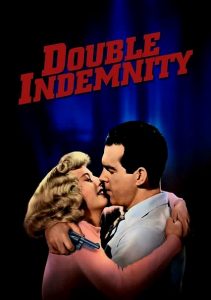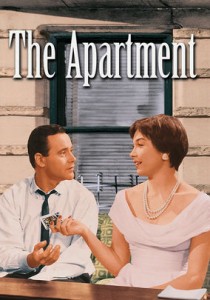Double Indemnity-1944
Director Billy Wilder
Starring Fred MacMurray, Barbara Stanwyck
Scott’s Review #847
Reviewed December 26, 2018
Grade: A
Double Indemnity (1944) perfectly epitomizes the classic film noir genre. It contains all the necessary elements, from intrigue, suspense, and unpredictable thrills to schemes and dastardly deeds by the major players.
The on-screen chemistry between leads MacMurray and Stanwyck provides enough romantic flair and provocative moments to entertain all as developments progress when a smitten man meets a femme fatale and a devious plot is hatched.
Director Billy Wilder was one of the most influential directors of his day. This picture was his first effort, and it received fabulous critical acclaim.
The accolades put him firmly on the map for years to come, culminating in an Oscar win in 1960 for The Apartment. Wilder uses a clever insurance “double indemnity” clause as its title, making it one of the best and most influential crime dramas of the 1940s, staking ground for other similarly themed films.
The story is told via flashbacks as a wounded Walter Neff (Fred MacMurray) scrambles to record a confession to his colleague and best friend, Barton Keyes (Edward G. Robinson).
The action rewinds to an ordinary day when Neff makes a routine stop to sell insurance and meets flirtatious Phyllis Dietrichson (Barbara Stanwyck). She brazenly inquires how she ought to take out an insurance policy on her husband’s life without his knowledge.
When Neff deduces Phyllis’s intention to kill her husband, he declines any further help but cannot forget the ravishing beauty and her charms. He ultimately succumbs to her whims and aids her in a wicked crime.
The adventure the audience is taking on is the most fun aspect of the film. We already deduce that Neff is involved in shenanigans, but most of the fun occurs after the murder has been committed and Phyllis and Neff’s scheme begins to unravel.
The added component of Neff’s colleague and close friend, Keyes, being involved as he starts to suspect foul play is equally compelling.
Will he finally realize that Neff is involved in the plot? If discovered, will Keyes cover for Neff? Will Phyllis’s history catch up with her and twist events?
These questions make the film a great picture.
A debate among viewers can ensue whether Neff is sympathetic as this point continues to cross my mind with each viewing. One can safely say that he is seduced by the charms of an eager and aggressive woman, but if he is to blame for the crimes, is she not even more to blame?
As events unfold, sides can be drawn, and characters can be more focused, particularly after Double Indemnity’s startling conclusion.
Neff is not a strong, heroic character. She is relatively weak and easily manipulated by the cagey Phyllis. It is interesting how little time it takes for Neff to succumb to her plot and willingly commit the crime.
In the final act, Neff does show some muscle needed, but this is only because his “goose is cooked,” and he finally realizes the dire nature of Phyllis’s character. However, shouldn’t he have discovered this sooner?
MacMurray and Stanwyck have smoldering chemistry and are a significant film success, keeping the audience invested in the plot. The added measure of the murder victim being relatively unknown to the audience adds a macabre rooting value to the pair.
Wilder never presents the plot as a romantic triangle, and Neff and Phyllis have no other romantic entanglements. The only roadblock is the insurance company and its suspicions about Phyllis.
Wilder adapted the screenplay from James M. Cain’s novella of the same name and spins a potent film noir from these pages. Double Indemnity (1944) is intelligent, sexy, and mysterious, mixing in as much sultry poise as witty dialogue.
The film is a measured success and a highly influential cinematic story thanks to the allure of fine actors and a stunning train adventure.
Oscar Nominations: Best Motion Picture, Best Director-Billy Wilder, Best Actress-Barbara Stanwyck, Best Screenplay, Best Scoring of a Dramatic or Comedy Picture, Best Sound Recording, Best Cinematography, Black-and-White

